
There's been a lot of informative work on subgroup voting patterns in 2020. One thing I wonder about: how consistent is the story across surveys? I've been digging into crosstabs to get a sense of within-pollster, 2016-20 changes across 8 pollsters. Threading some results here...
A few things:
-why looking within pollster is key dataforprogress.org/blog/5/02/bide…
-crosstab data is here docs.google.com/spreadsheets/d…
-there's a lot of variation in how pollsters report crosstabs
-graphs show diff in Biden's subgroup margin - Clinton's (& legend shows poll's overall shift)
-why looking within pollster is key dataforprogress.org/blog/5/02/bide…
-crosstab data is here docs.google.com/spreadsheets/d…
-there's a lot of variation in how pollsters report crosstabs
-graphs show diff in Biden's subgroup margin - Clinton's (& legend shows poll's overall shift)
First by gender--movement generally in Dem direction, but shifts among women are much greater. Net gender gap increases are 11, 9, 3, 2, 9, 7, -8, 14.
2016 didn't widen gender gap, but 2020 has agadjanianpolitics.wordpress.com/2018/07/23/hav…
2016 didn't widen gender gap, but 2020 has agadjanianpolitics.wordpress.com/2018/07/23/hav…
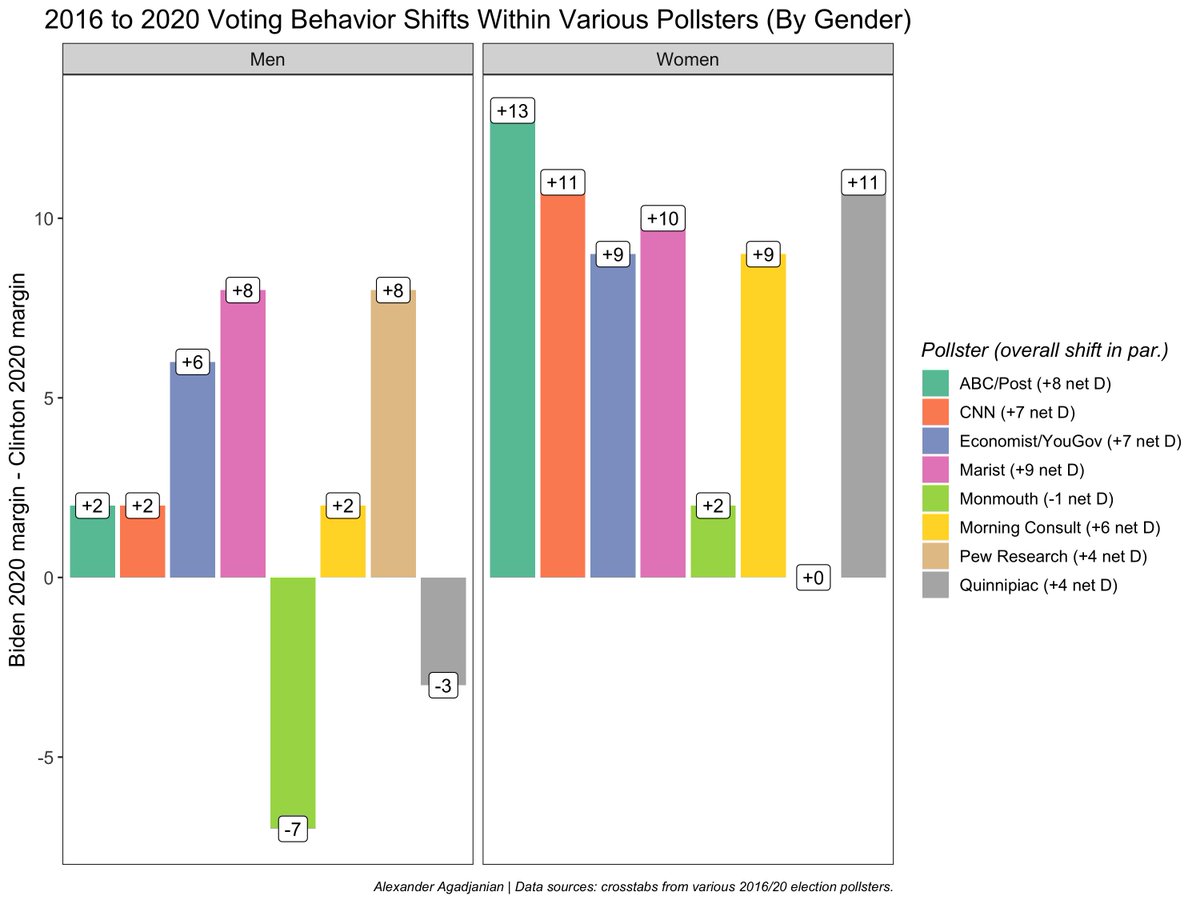
This also highlights how much variation there is across pollster--there's a trend here, but if you only picked up a single poll (e.g. like Pew), you might've been misled. Same thing happens for other subgroup trends.
Next for partisanship--huge gains by Biden among Independents. Not shown here, but Dems have gone from losing Indies in all 8 polls in 2016 to winning Indies in 7 of 8 polls in 2020.
Another consistent trend: Biden has done better in limiting in-party defections than Clinton did
Another consistent trend: Biden has done better in limiting in-party defections than Clinton did
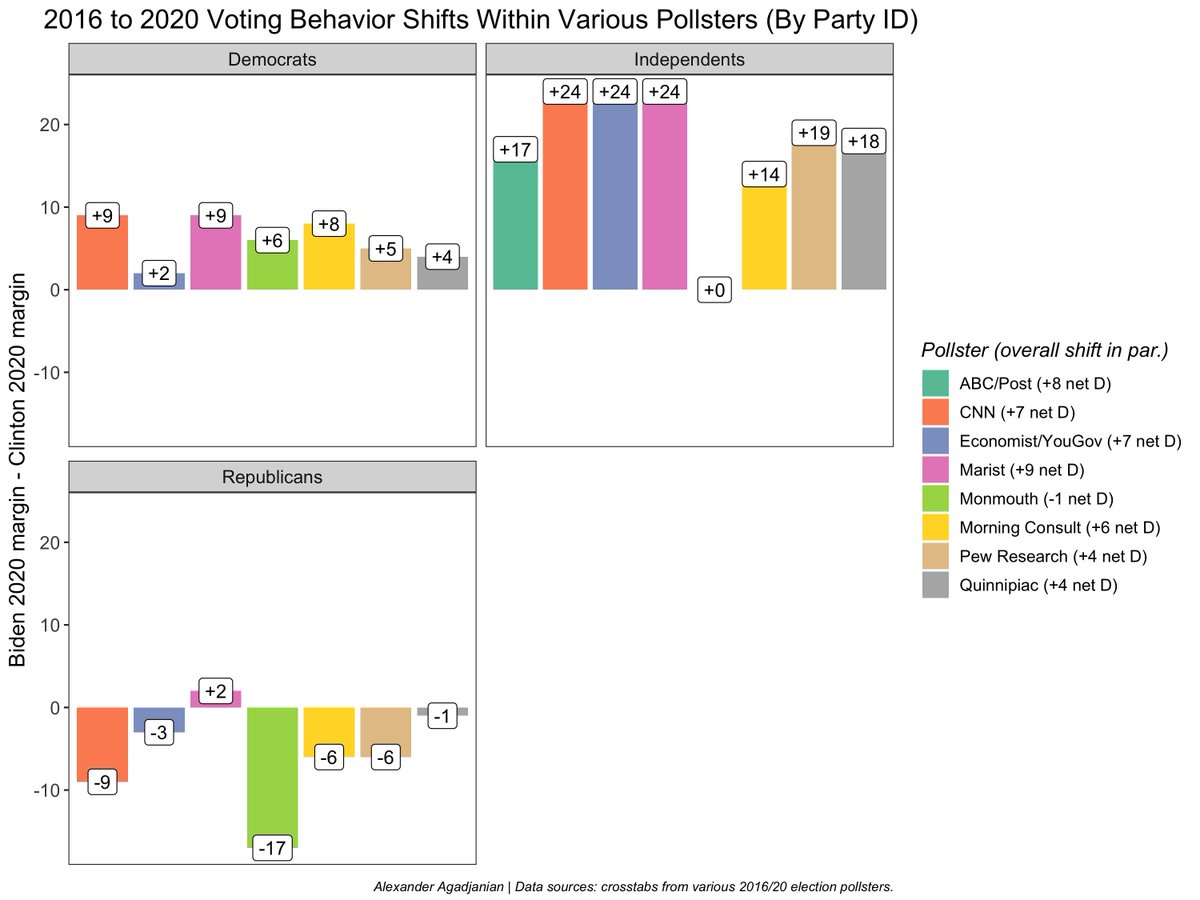
A lot of variation across pollster, but results for race fits with other analyses (nytimes.com/2020/10/28/ups…): gains among whites and some losses among nonwhites for Biden.
Also keep in mind the inconsistent subgroup categories for nonwhites here (and missingness in some cases).
Also keep in mind the inconsistent subgroup categories for nonwhites here (and missingness in some cases).
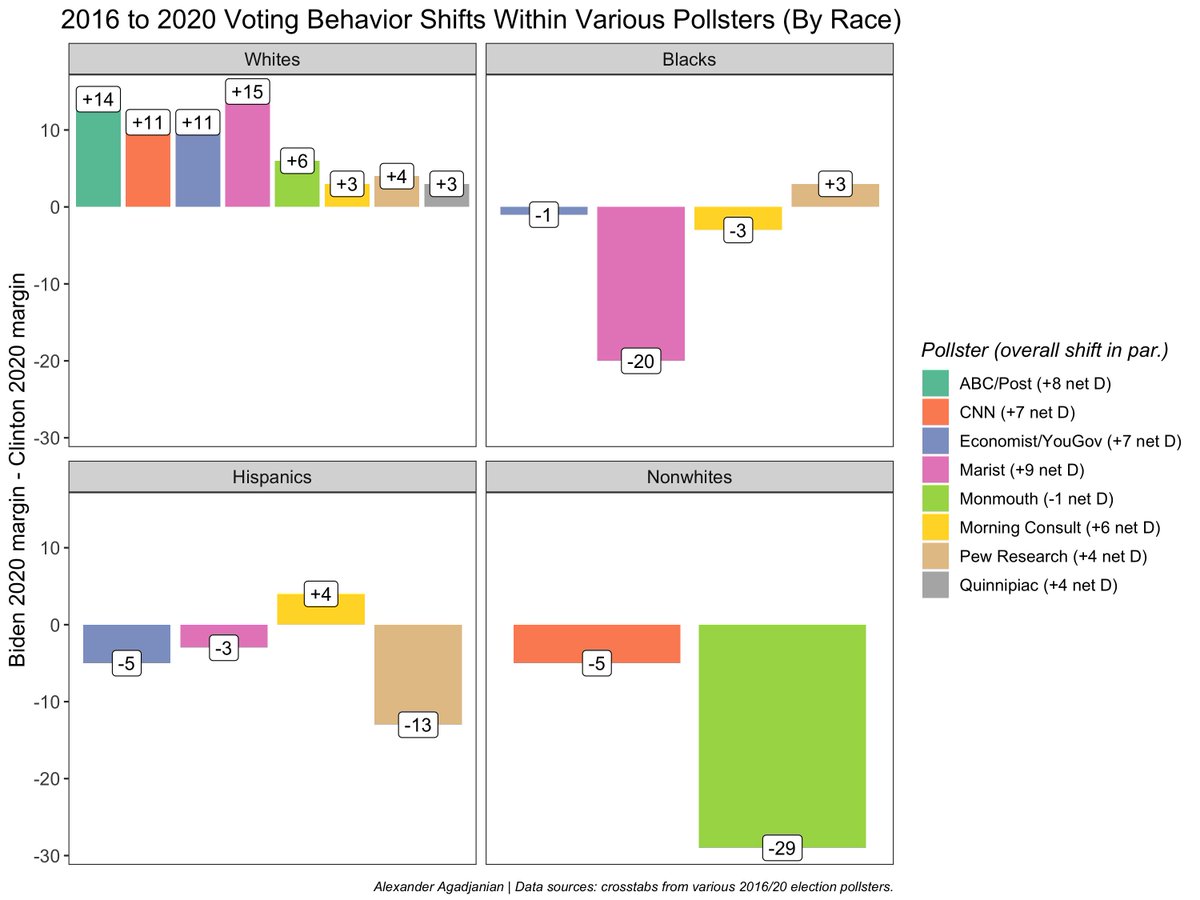
Education is another case where there's a lot of cross-pollster variation, but in general I'd say there's more consistent evidence of greater Biden gains among college degree holders (among both all Americans and whites only). 
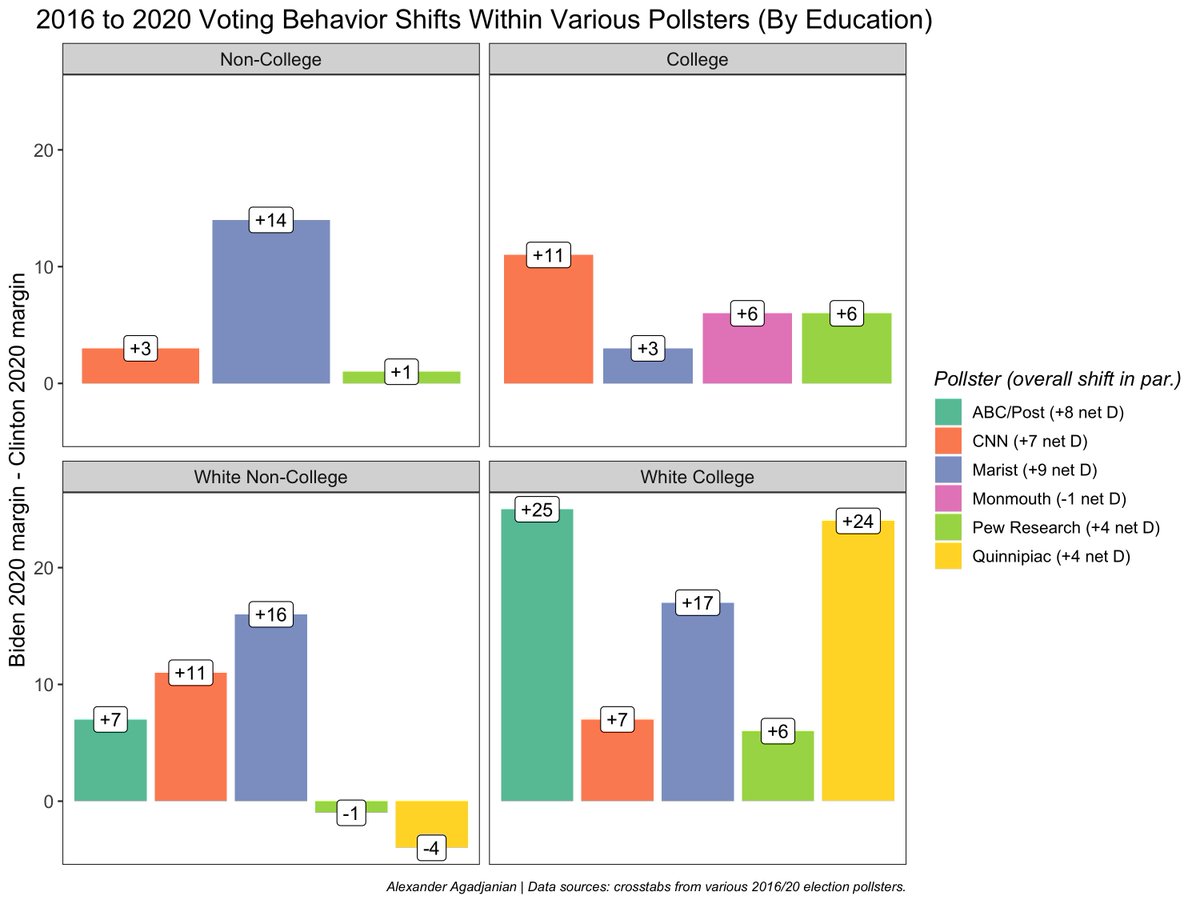
So many different ways that pollsters report (and do not report) results by age group... fuzziness aside, this reinforces gains among oldest Americans for Biden (see here too dataforprogress.org/blog/5/02/bide…). Also some consistency in gains among youngest 18-29 bracket 
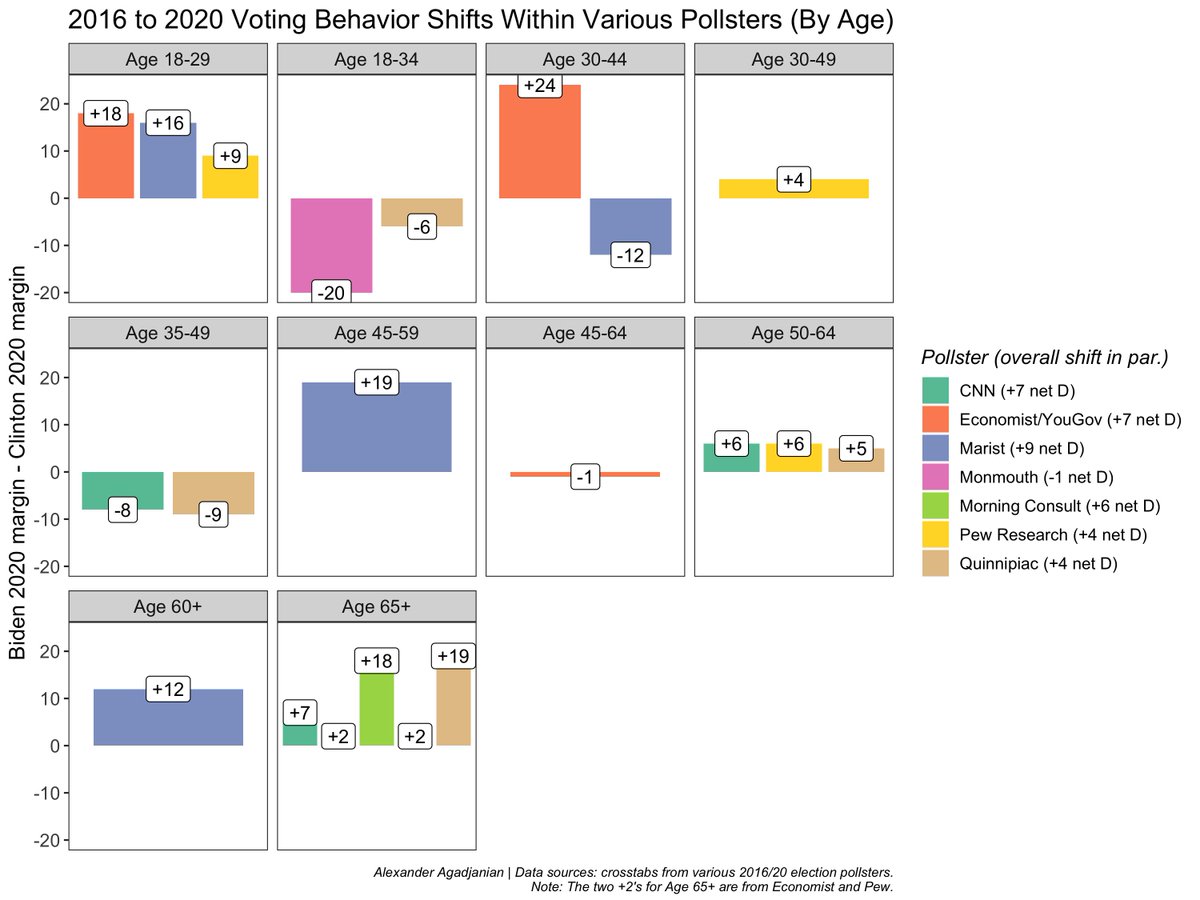
Lastly, for ideology, the trends mirror those for partisanship earlier: big shifts in Dem direction in the middle (moderates). Some trace of better retaining liberals too. Interestingly, conservatives (like Republicans earlier) generally trend away from Biden compared to Clinton. 

• • •
Missing some Tweet in this thread? You can try to
force a refresh





